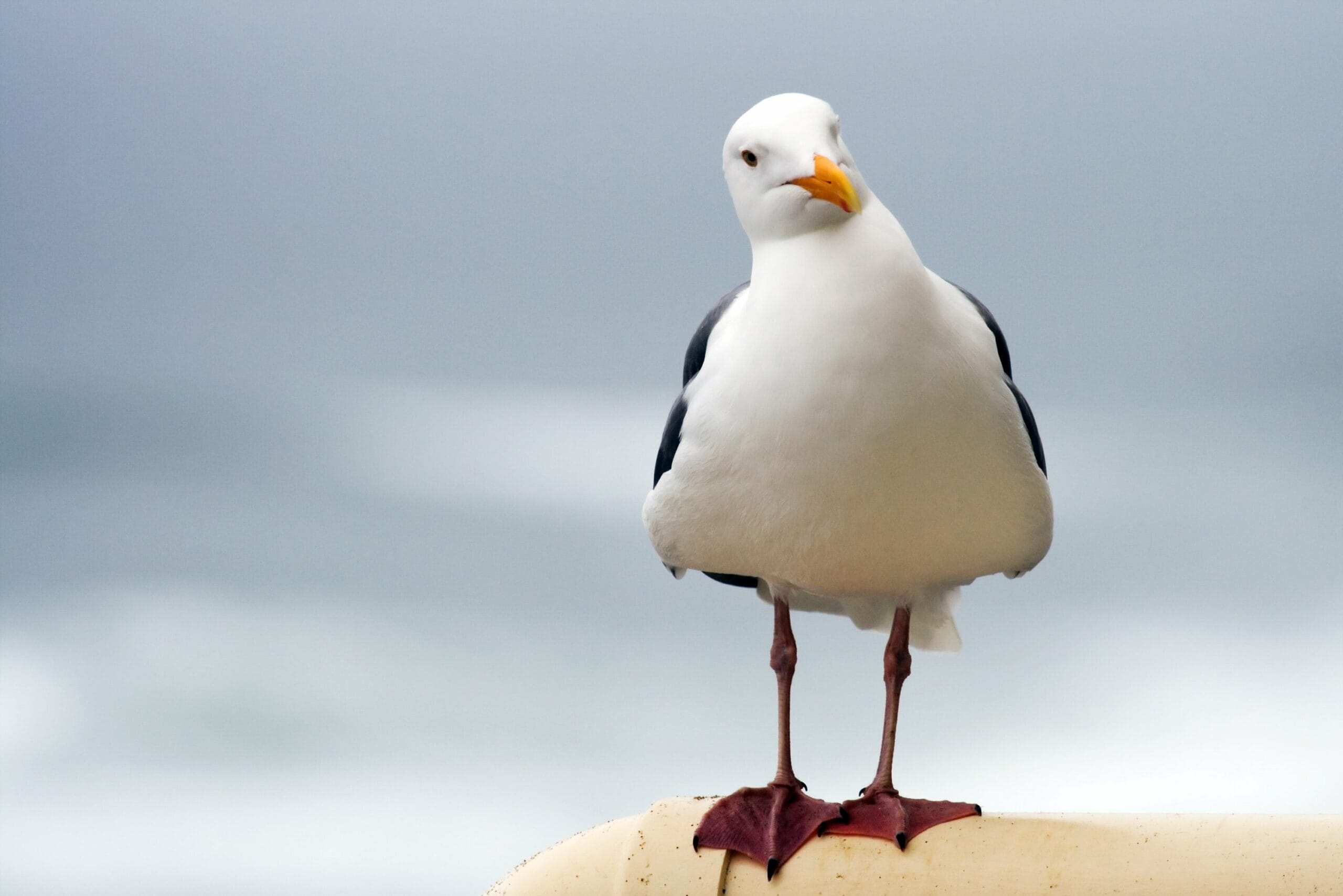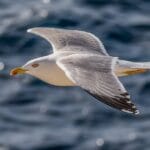Ever wonder what those noisy seagulls love to eat? Get ready to dive into the world of these feathered scavengers! In this article, we’ll explore their dining habits, from the scraps they steal to the fish they hunt. We’ll uncover what makes them opportunistic eaters and how their food choices affect the marine environment. So, let’s set sail and discover the curious culinary adventures of seagulls!
What Do Seagulls Eat?
Seagulls, those cheeky seafaring birds, aren’t picky eaters. They’ll happily munch on just about anything they can get their beaks on. From the ocean’s depths to the land’s leftovers, seagulls have a varied and opportunistic dining experience.
From the Ocean’s Buffet:
- Seagulls love to dive into the water for a tasty snack of fish like mackerel, herring, and sardines.
- They’ll also feast on shellfish, mollusks, crabs, and krill that live in the marine realm.
Insect Interceptors:
Seagulls have a knack for catching insects mid-flight or snatching them off the ground.
Small Mammal Hunters:
If they’re feeling adventurous, seagulls will go after mice, voles, and even baby rabbits.
Scavengers’ Delight:
When nature’s leftovers call, seagulls are never far behind. They’ll scavenge on dead animals to satisfy their hunger.
Food Thieves and Urban Opportunists:
Seagulls are also known to steal food from other birds and have even adapted to urban life, where they rummage through garbage and steal fast food scraps.
A Hungry Horde:
Seagulls are social creatures and often feed in flocks. They’re not afraid to squabble over a good meal, and their noisy calls can be heard from miles away.
Nutritional Bounty:
Seagull’s diverse diet provides them with a range of nutrients. Fish is a great source of protein and omega-3 fatty acids, while insects provide essential vitamins. Scavenging meat gives them a boost of energy, and urban scraps offer a variety of nutrients that help them thrive.
Conclusion:
Seagulls are adaptable and opportunistic omnivores, making them successful scavengers and hunters. Their varied diet keeps them well-fed and is a testament to their ability to survive in diverse marine and coastal environments. Did you know what do seagulls taste like? They are scavengers who are not picky eaters and will consume almost anything. In the ocean, seagulls feed primarily on fish, crabs, and other small marine creatures, but what do seagulls eat in the ocean? During the winter, these birds migrate to warmer climates where they can find more food. what do seagulls do in the winter is a fascinating topic that birdwatchers and nature enthusiasts should check out.
What Do Seagulls Eat: A Comprehensive Dietary Guide
Seagulls, the familiar coastal birds, are like feathered foodies with a surprisingly varied diet. They’re like avian omnivores, gobbling up anything from tiny plankton to sizeable fish.
A Seagull’s Buffet
Imagine a seagull’s dinner table, and you’ll find a smorgasbord of delicacies:
- Fishy Feast: Herring, sardines, and mackerel are the go-to treats that keep these seafaring birds flying.
- Crustacean Cravings: Crabs, shrimps, and barnacles provide a crunchy, salty snack.
- Mollusky Delights: Mussels, clams, and oysters are like briny, calcium-packed tidbits.
- Bugging Out: Flies, beetles, and grasshoppers add a protein punch to their menu.
- Egg-cellent Adventure: Bird eggs are a nutritious, high-energy snack.
- Scavenger’s Feast: When times get tough, seagulls turn to carrion, such as dead fish or birds.
- Seaweed Salad: In leaner seasons, seagulls may turn to seaweed for sustenance.
Savvy Scavengers
Seagulls have a knack for finding food, even in unexpected places. They’re like feathered scavengers, raiding garbage cans and landfills with their keen eyesight and omnivorous appetites.
Fueling Their Flights
These energetic birds have a hearty appetite, consuming about 20% of their body weight daily. Their diet needs to balance fat and protein to keep them buzzing.
Takeaway Tips
- Seagulls are like dining divas, eating everything from plants to animals.
- Their food choices change depending on where they live and what’s around.
- They’re scavengers by nature, taking advantage of any easy meal.
- They need to eat a lot, like avian bodybuilders, to maintain their active lifestyle.
Seagull Diet: Unraveling the Food Choices of Marine Birds
Unveiling the Seagull’s Menu
Seagulls, the squawking, seaside companions, may seem like messy eaters, scavenging for whatever they can find. But did you know they have a surprisingly diverse diet that’s adapted to their unique coastal lifestyle?
Feasting on the Sea’s Bounty
Fish, shellfish, and mollusks are the seagulls’ go-to dishes. Coastal seagulls are adept at snatching fish from the water’s surface, while inland ones target smaller prey like worms and insects.
Scavengers with No Boundaries
Don’t be fooled by their glamorous seaside image—seagulls are opportunistic feeders. They’re not above rummaging through trash cans and snatching sandwiches from unsuspecting beachgoers.
Stealing with Style
Seagulls have a sneaky trick up their wings: kleptoparasitism. They’re known to chase other birds and animals, trying to swipe their hard-earned meals. It’s like they’re the sea’s version of pirates!
The Secret Power of Their Stomachs
To handle their eclectic diet, seagulls have a digestive system that’s a marvel of nature. It’s got a special grinding chamber that helps them crush shells and other hard-to-digest items.
Dietary Habits of a Seagull
Food Preference: Small fish, crustaceans, mollusks, scraps
Feeding Tactics: Scavenging, surface-dipping, kleptoparasitism
Nutritional Needs: Protein, calcium
Digestive Prowess: Proventriculus and gizzard for grinding food
Conclusion
The seagull’s diet is a testament to their adaptability and their ability to find food even in the most unexpected places. From diving for fish to snatching snacks from humans, these versatile birds have mastered the art of survival in the coastal realm. Understanding their dietary habits not only gives us a glimpse into their fascinating behavior but also highlights their role in the delicate balance of marine ecosystems.
Unlocking the Feeding Strategies of Seagulls
Seagulls, with their keen eyes and distinctive cries, are a familiar sight along coastlines. But beneath their playful facade lies a fascinating tale of survival and adaptation. How do these birds navigate the watery world in search of sustenance? Welcome to the world of seagull feeding strategies.
Feeding Adaptations
Seagulls are not picky eaters. They’re like the ocean’s janitors, feasting on anything they can scavenge. They’re also opportunists, taking advantage of whatever food sources come their way.
Sharp Beaks: Imagine tiny crowbars! Seagulls’ beaks are specially designed to crack open shellfish and extract the tasty morsels inside. They also have strong, hooked tips for tearing flesh.
Flexible Stomachs: Seagulls have stomachs in two parts. The first is like a blender, breaking down food mechanically. The second is a “sand mill,” where they grind down food with swallowed sand or pebbles. Talk about a digestive superpower!
Feeding Behaviors
Seagulls use various tactics to find food. They’re like feathered ninjas, employing stealth and strategy to get their next meal.
Scavenging: Seagulls are kings of the beach cleanup crew. They swoop down on scraps of food left behind by humans or animals. Sometimes, they even steal from other birds.
Kleptoparasitism: It’s like bird-on-bird crime! Seagulls will chase other birds, swooping down to snatch their hard-earned meals.
Surface Dipping: When the ocean’s surface is calm, seagulls glide along, dipping their beaks into the water to catch tiny fish and other marine critters. It’s like avian fishing!
Dietary Diversity
Seagulls’ diets are as diverse as their feeding strategies. They’re not restricted to seafood alone. Their menu includes:
- Fish
- Crustaceans (crabs, shrimp)
- Mollusks (clams, oysters)
- Insects
- Seaweed
- Plant matter
- Human waste (sometimes)
The Power of Adaptation
Seagulls’ ability to adapt their feeding strategies has made them thriving members of coastal ecosystems. Their sharp beaks, flexible stomachs, and varied feeding behaviors allow them to exploit a wide range of food sources. They’re not afraid to scavenge or steal, but they’re also skilled hunters in their own right.
So, next time you see a seagull, know that behind its antics lies a complex array of feeding adaptations. They’re not just “seagulls.” They’re masters of survival, thriving in a challenging and ever-changing marine environment.
FAQ
Q1: What is the primary source of food for seagulls?
A1: Seagulls primarily feed on small fish, crustaceans, and mollusks. Coastal species of seagulls have a diet focused on fish, crabs, and other marine creatures, while inland species are more likely to feed on human waste, scraps, and discarded food items.
Q2: How do seagulls exhibit adaptability in their eating habits?
A2: Seagulls demonstrate adaptability in their eating habits by consuming a wide range of food items, both plant and animal matter. They have evolved effective hunting techniques, such as stealing food from smaller birds and scavenging in garbage cans and dumpsters.
Q3: What is the role of seagulls’ digestive system in their feeding habits?
A3: Seagulls possess a specialized digestive system with a two-part stomach, which allows them to efficiently process a variety of food sources. The proventriculus secretes digestive enzymes, and the gizzard grinds food using swallowed stones, enabling seagulls to extract nutrients from diverse food items.
Q4: How do seagulls adapt their feeding behaviour to different prey?
A4: Seagulls exhibit specialized feeding behaviors based on the prey they target. They swallow smaller fish whole or pluck them from the water while in flight. For crustaceans, they employ their strong bills to crack open shells and access the meat inside.
Q5: What are some of the unique adaptations of seagulls that aid their feeding?
A5: Seagulls have evolved specific adaptations to enhance their feeding capabilities. These include unhinging jaws that allow them to swallow large prey and specialized bills that are adapted for handling different food items, such as fish, shellfish, and small mammals.
- China II Review: Delicious Food & Speedy Service - April 17, 2025
- Understand Virginia’s Flag: History & Debate - April 17, 2025
- Explore Long Island’s Map: Unique Regions & Insights - April 17, 2025
















